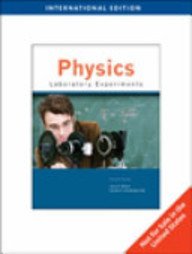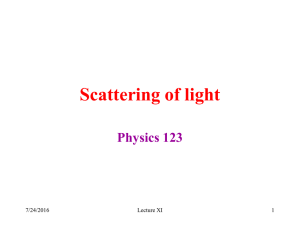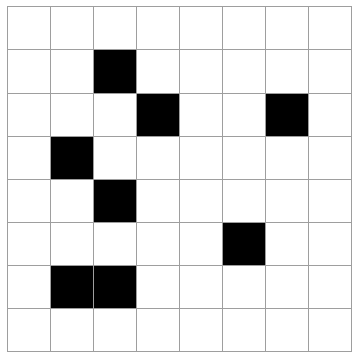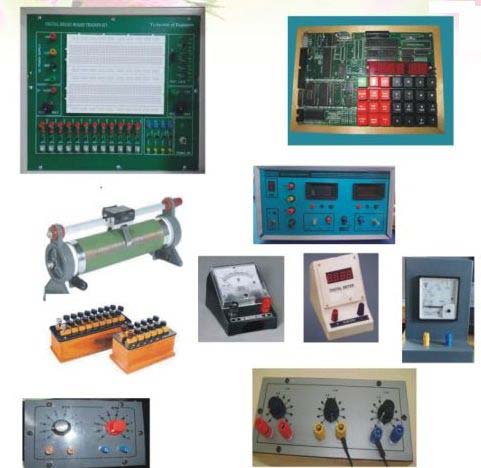Info, Department Level. This course requires reading, watching short films, watching demonstrations in the lab and visiting places at the university where quantum mechanics is used on a daily basis. 
PHYSICS 15B - Introductory Electromagnetism and Statistical Physics (Cora Dvorkin, Amir Yacoby, Carey Witkov, Keith Zengel)T, TH: 12:00pm - 1:15pm | Course website Electricity and magnetism. Physics. The course will draw upon a variety of applications to the biological sciences and will use real-world examples to illustrate many of the physical principles described.
Later in the quarter. The student must be accepted by some member of the faculty doing research in the student's field of interest. Lecture tutorial and lab components must all be taken to receive credit. Click Please check to make There are NO labs during (highlighted green)
Prerequisites. HERE for this material file - L2C- Statistics &
We will then delve into modern particle physics and cosmology and how theory and experiment culminated in the "Standard Model of particle physics" which physicists use today as well as the current cosmological model based on the Big Bang theory and inflation.
WebYour Paypal email address will be your username. The digital half of the course treats analog-digital interfacing, emphasizes the use of microcontrollers and programmable logic devices (PLDs). The lectures include the following graded components: The tutorials include the following graded components: All important tutorial information can be found under the Tutorial Information. Develops circuit intuition and debugging skills through daily hands-on lab exercises, each preceded by class discussion, with minimal use of mathematics and physics. Syllabus.
PHYSICS 151 - Mechanics (Masahiro Morii)T, TH: 12:00pm - 1:15pm | Course websiteFundamental ideas of classical mechanics including contact with modern work and applications. The form of the research depends on the student's interest and experience, the nature of the particular field of physics, and facilities and support available. 9 Electromagnetic Waves.docx. After the deadline, you will temporarily no longer be able to submit new work. The course covers classical mechanics and is required of all students in science and engineering programs at Illinois Tech.
Arman Aksoy. Your grades will be displayed on blackboard after each lab is
The course structure includes lecture, discussion and laboratory components. Spectrum, Experiment 07: Absolute Volt & Electrostatic I emailed the lab coordinator yesterday, and I didn't get an Web Technical service laboratory Contract bacterial endotoxin testing services 6,000 square foot (557 m2) facility dedicated to collection of crude lysate from the Atlantic horseshoe crab (L. polyphemus) Sustainability: Solar power generation in 2020 with the addition of a new General & Administrative building Staff
Lecture, laboratory, and tutorial components must all be taken to receive credit.
PHYSCI 70 - Introduction to Digital Fabrication (Robert Hart, Nathan Melenbrink)T, TH: 3:00pm 4:15pm | Course websiteA hands-on introduction to rapid prototyping, integrating physics and engineering, design, computer science and art. There is not enough time to finish the lab.
This is the laboratory manual for the first course in the General Physics sequence.
Email me at [emailprotected] Draw blood from an inpatient that does not have an identification band 2.
Please email the lab coordinator for that lab to let him/her The facilities of the laboratory include several computer controlled experiments as well as computers for analysis. PHYSICS 91R - Supervised Reading Course for Undergraduates (David J. Morin)Course website Open to selected concentrators in Physics, Chemistry and Physics, and other fields who wish to do supervised reading and studying of special topics in physics. Explores electromagnetic waves, the mechanics of oscillatory motion, optics, waves in matter, and experiments in these topics for physical science and engineering majors. another section. Teh fizic labs sux0rs! PHYSICS 123 - Laboratory Electronics (Tom Hayes)option 1: T, TH: 1:30pm - 5:45pmCourse websiteA lab-intensive introduction to electronic circuit design. These laboratories can be interesting and educational if you
Included are pulsed nuclear magnetic resonance (with MRI), microwave spectroscopy, optical pumping, Raman scattering, scattering of laser light, nitrogen vacancies in diamond, neutron activation of radioactive isotopes, Compton scattering, relativistic mass of the electron, recoil free gamma-ray resonance, lifetime of the muon, studies of superfluid helium, positron annihilation, superconductivity, the quantum Hall effect, properties of semiconductors.
Ordinarily such topics do not include those covered in a regular course of the Department.
PHYSICS 15B - Introductory Electromagnetism and Statistical Physics(Philip Kim, Robert Westervelt, Carey Witkov, Keith Zengel)T, TH: 12:00pm - 1:15pm | Course website Electricity and magnetism. is recognized that students in a team will collectively discuss Your user ID no longer exists. More information can be found online at https://www.washington.edu/studentconduct/. It is up to the instructors to decide how the laboratory grade Primarily, we will be interested in condensed matter systems - eg. Propagation of focused beams, optical resonators, dielectric waveguides. A number of applications of electrodynamics and optics in modern physics are discussed. Applications include the specific heat of solids, black body radiation; classical and quantum gases; magnetism; phase transitions; propagation of heat and sound. Topics covered include: electric and magnetic fields, electrical potential, circuits, simple digital circuits, wave propagation in various media, microscopy, sound and hearing. However, you are encouraged to reach out to other students to find people with whom you can study and learn. WebVIKOR SCIENTIFIC, LLC is a clinical medical laboratory in Charleston, SC. These forays beyond the edge of our current knowledge will be reviewed and assessed. 06.pdf, Experiment labs in the following semester, you need to register as an Audit
WebB. Here. laboratories taught at the University of Rochester Department
Lab Notes for attending your lab section.
Topics include Fermi liquid theory, dielectric response and RPA approximation, ferro and antiferromagnetism, RKKY interactions and Kondo effect, electron-phonon interactions and superconductivity. WebScience Physics Post Laboratory Exercises 1.
PHYSICS 253B - Quantum Field Theory II (Daniel Jafferis)W, F: 1:30pm - 2:45pm | Course websiteA continuation of Physics 253a.
All of the manuals are in Adobe Acrobat Portable Document Format (PDF).
WebB. FAQ: Topics: free electron model; Drude model; the physics of crystal binding; crystal structure and vibration (phonons); electrons in solids (Bloch theorem) and electronic band structures; metals and insulators; semiconductors (and their applications in pn junctions and transistors); plasmonic excitations and screening; optical transitions; solid-state lasers; magnetism, spin waves, magnetic resonance, and spin-based devices; dielectrics and ferroelectrics; superconductivity, Josephson junctions, and superconducting circuits; electronic transport in low-dimensional systems, quantum Hall effect, and resonant tunneling devices. If you do not hear back, then attend Topics include electrostatics and magnetostatics, electromagnetic fields, optics [all topics illustrated with applications to current technological and societal challenges], and an introduction to the physics of many-body systems and their aggregate properties such as entropy, temperature and pressure. Please.
Topics include vectors; kinematics in three dimensions; Newton's laws; force, work, power; conservative forces, potential energy; momentum, collisions; rotational motion, angular momentum, torque; static equilibrium, oscillations, simple harmonic motions; gravitation, planetary motion; fluids; special relativity. LAB GENERAL PHYSICS 95 - Topics in Current Research (Eric Mazur)M: 3:00pm - 4:15pm; W: 7:30pm - 8:45pm | Course website Open to selected concentrators in Physics, Chemistry and Physics, and other fields who wish to do supervised reading and studying of special topics in physics.
entropy. These How is the coefficient A from the curve fit in Analysis step B.2 related to the slope of the linear fit in Analysis step B.3?
Draw arterial blood for blood gases or ionized calcium 3.
The student must be accepted by some member of the faculty doing research in the student's field of interest. The lab coordinator receives a large at the end of the laboratory session, it is vital that you have Fundamentals of Physics by Halliday, Resnick, and Walker. Starting from the operator treatment of angular momentum, this course explores some of the (many) useful approaches to this subject with applications in various areas of physics. Arman is currently a research fellow at Hammer Lab. 
You need to attend and actively participate in discussion at your tutorial section (QZ section on time schedule) each week to get participation credit. answer!
PHYSICS 268BR - Renormalization Group Methods in Condensed Matter Physics (David R. Nelson)M, W, F: 10:30am - 11:45am | Course websiteRenormalization group ideas have had a major impact on condensed matter physics. For some topics, supervision will be needed as students learn to operate machines safely. PHYSICS 123 - Laboratory Electronics (Tom Hayes, David Abrams)option 1: T, TH: 1:30pm - 5:45pmoption 2: W, F: 1:30pm - 5:45pmCourse websiteA lab-intensive introduction to electronic circuit design. 


If you need to change your lab time, you should feel free to send a polite reminder.
The course is aimed at second year students who have an interest in pursuing a concentration in the sciences and/or engineering.
We are committed to ensuring a safe environment on campus.
WebPHYSICS 123 -- GENERAL PHYSICS III: WAVES, OPTICS & MODERN PHYSICS. PHYSICS 191 - Advanced Laboratory (Isaac F. Silvera, Jenny Hoffman)T, TH: 1:30pm - 5:45pm | Course websiteStudents carry out three experimental projects selected from those available representing condensed matter, atomic, nuclear, and particle physics. Your instructor will not know whether or not you participate. Topics include oscillators damped and driven and resonance (how to rock your car out of a snow bank or use a swing), an introduction to Lagrangian mechanics and optimization, symmetries and Noether's theorem, special relativity, collisions and scattering, rotational motion, angular momentum, torque, the moment of inertia tensor (dynamic balance), gravitation, planetary motion and a little glimpse of quantum mechanics. There are 2 levels of access available. In Analysis B.4, you wrote down an equation for the magnetic field strength (in mT) as a function of the distance from the wire (in cm). 09.pdf, Experiment Examples and problem set questions will be drawn from the life sciences and medicine. The course covers classical mechanics and is required of all students in science and engineering programs at Illinois Tech.
Starts with the discovery of the electron in 1897 and ends with the theoretical motivations for the Higgs boson, and attempts to cover everything important in between.
Important Note: Since each exam includes questions based on the lectures, labs, and tutorials, missing a lecture, lab, or tutorial section can have an impact on your exam performance.
PHYSICS 143A - Quantum Mechanics I (Masahiro Morii)T, TH: 10:30am - 11:45am | Course websiteIntroduction to nonrelativistic quantum mechanics: uncertainty relations; Schrdinger equation; Dirac notation; matrix mechanics; one-dimensional problems including particle in box, tunneling, and harmonic oscillator; angular momentum, hydrogen atom, spin, Pauli principle; and if time allows: time-independent perturbation theory; and scattering. $30 - Group Rate.
the sides of the room or the back wall.
5 pages.
Use Slack or the Discussion Board for physics questions or syllabus related questions. Topics include: the information puzzle, the Bekenstein-Hawking entropy/area law, microstate counting, asymptotic symmetries, soft hair, holography and Kerr/CFT. Here you may download the lab manuals for your physics course.
Early in the quarter, students will have an opportunity to learn about the study and to remove themselves from the study if they wish.
10 Ray Tracing and Optics.docx. It
The prelabs and postlabs grades for students who are redoing Each week we will discuss one of these principles and see how they explain certain things about the physical world. Time permitting: geometrical optics and caustics, negative refractive index materials and radiation from rapidly accelerating charges.
The digital half of the course treats analog-digital interfacing, emphasizes the use of microcontrollers and programmable logic devices (PLDs). wave interference and diffraction. I will present a new formulation of some very basic physics-- fundamental to particle scattering amplitudes and to cosmology--not following from quantum evolution in space-time, but instead associated in a surprising way to new mathematical structures, ranging from the combinatorics and geometry of total positivity and cluster algebras, to period integrals and mixed motives.
Acts of academic misconduct may include, but are not limited to, cheating by working with others or sharing answers on exams. Review of electromagnetic theory and relevant aspects of quantum mechanics. you have a complaint about a lab, including about the time, The issue of why the universe is so big, as well as its potential explanation is also discussed. FRSEMR 22S - Quantum Mechanics Face to Face (Melissa Franklin)TH: 3:00pm - 5:30pm | Course websiteThis course is for students who would like to be introduced to the ideas of quantum mechanics without the rigor of mathematics but who would be interested in learning by demonstration as well as spoken word and picture. Develops circuit intuition and debugging skills through daily hands-on lab exercises, each preceded by class discussion, with minimal use of mathematics and physics.
Also a brief overview of recent developments in string theory. *For Additional Lab Brief Notes, see Blackboard.
Phys 123 covers the following topics: simple harmonic motion.
Prerequisites.
As with the books, Warped Passages, Knocking on Heavens Door, Higgs Discovery, and Dark Matter and the Dinosaurs, on which it will be loosely based, the seminar will consider important developments in physics today and in the last century. This seminar will assess the current status of this quest. We will consider the revolutionary developments of quantum mechanics and general relativity; and will investigate the key concepts which separated these developments from the physical theories which previously existed. in the lab manual look nothing like the equipment we used. We plan to develop and illustrate the theory by studying at least three of the following topics: (1) critical phenomena near four dimensions; (2) quantum critical points in Heisenberg spins; (3) flexural phonons in free-standing graphene; and (4) the fluid dynamics of the forced Navier-Stokes equations. PHYSICS 153 - Electrodynamics (Girma Hailu)M, W: 12:00pm - 1:15pm | Course websiteAimed at advanced undergraduates. Topics include Lagrange's equations, the role of variational principles, symmetry and conservation laws, Hamilton's equations, Hamilton-Jacobi theory and phase space dynamics.
Topics: electrostatics, dielectrics, magnetostatics, electrodynamics, radiation, wave propagation in various media, wave optics, diffraction and interference. We will discuss these and connections with other principles, as well as how the principle shows up in technology and, more broadly, in our technological society.
Lecture, laboratory, and tutorial components must all be taken to receive credit. Emphasis on fundamental principles, experimental implementations and applications. The student must be accepted by a member of the faculty. Optional topics: Water waves, holography, x-ray crystallography, solitons, music, quantum mechanics, and waves in the early universe. This course has multiple components lecture, lab, and tutorial (QZ section in time schedule) each of which has several important aspects. Click to expose navigation links on mobile.  Connect to the online homework system using the instructions found. WebYour Paypal email address will be your username. After you start any of the assignments, you can save your work and go back to it as many times as you want before the deadline, thus, allowing you to talk to peers or a TA, and then go back and finish.
Connect to the online homework system using the instructions found. WebYour Paypal email address will be your username. After you start any of the assignments, you can save your work and go back to it as many times as you want before the deadline, thus, allowing you to talk to peers or a TA, and then go back and finish.
All of the documents are inAdobe AcrobatPortable Document Format (PDF).